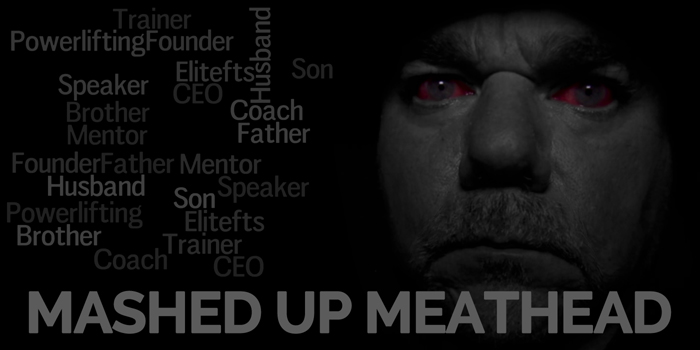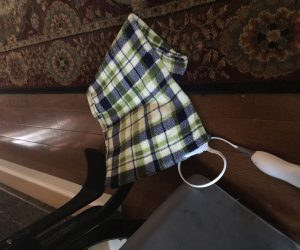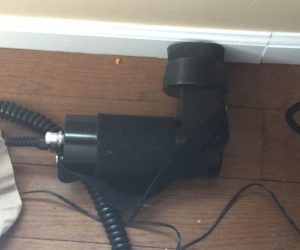
This post is the follow up to THIS
Saturday the 18th was my first day back in the gym. Earlier that morning I did my rehab work at home so I could focus on other things in the gym.
Remember my rehab just started a week ago due to the excessive swelling in my leg.
My general rehab (several times a day)
Active Recovery
- Ab, quad, glute, calf, and lower back contractions
- Heel Slides
- Supine Hip Abduction
- Modified Bridges
- Straight Leg Raise
- Calf Raises
- Heel Raises
- Mini Squats
- Very low step ups - with slight assistance
- Lateral Step Ups - with slight assistance
- High Wall Sits
- Sit to stand without using arms
- Knee to chest based on ROM and pain scale of 4
- Walking with special attention to gait
- all of these are done at low pain threshold.
Passive Recovery
- Game Ready Ice Unit - once a day, after the hardest training sessions
- Heat Compress - 4-5x per day for 20-30 minutes
- Percussor - 2-3x per day for 15-20 minutes working from knee up to hip
-
Dolphin Neurostim - 2x per day
** Had it not been for the extreme swelling, the active and passive recovery would have started on week 2
How & where I spent my life
At the gym
When I am in the gym I have been doing...
- 100 reps of leg extensions, 100 reps of leg curls (the load was light)
- 100 reps of leg curls (the load was light)
- Biked for 5 minutes
- Hip adduction and abduction machine for 20 reps each.
- Yoke bar squat to a 20-inch box. Slowly over multiple sets, I worked the weight up by a dime and nickel per side until I reached 45 pounds per side, where I did 15 reps. I will keep at this weight for the week (will squat every day or every other day). Over the week I will work the box height down to 90 degrees. Once I get there, I will take the box back up and increase the weight to 185 and do the same. This is the progression I have in mind now but I am sure it will change based on how I respond.
- I will resume training for all other body parts and ramp up over the next four weeks.
{ EDIT - I did 185x20 on the 90-degree box last night so I suck at sticking to my own rules. I called Dani Overcash after my training to enlist her Physical Therapy help in harnessing my stupidity in a more positive way }
Answers to questions I've been asked
What type of replacements do I have?
They are both titanium with ceramic femur heads. The first one (2013) was done using a posterior approach. This was not the standard approach. The surgeon did go through the rear but didn't cut or detach any muscle or tendons. The recovery protocol included a blood thinner, compression tights for four weeks, and many restrictions (no bending, no crossing leg, no squatting past 90 degrees , etc). I recovered faster than expected. When that one was replaced, the other hip needed to be replaced too but I was waiting until it became symptomatic. I kept most of the aforementioned restrictions in my training to preserve the other hip for as long as I could.
The reason I put off replacing the other hip at the time was because hips can only be replaced so many times before your femur or hip girdle will not be able to hold it. I was told 2-3 at most. Each replacement is expected to last 10-15 years based on use. I guessed it would be ten years for me. The older I get, the risk will outweigh the reward. I do not want to spend my last years in a wheelchair because I used up all my hip replacement cards. At the same time, I am not going to stop doing what I love because we only live once.
I have done this long enough now that I know I am not going to compromise on this one.
The reason I did this last replacement using the anterior method is simple- it was my surgeon's specialty and preferred method. I actually switched surgeons because my original one couldn't get me in for an appointment for 12 weeks. After trying to get in several times (including hoping someone canceled on him), I starting looking for someone else. (Side note- the end of the year is the worst time to see an ortho.) I would have waited if I hadn't completely run my hip into the dirt. I was dealing with 24/7 pain and groin cramps waking me up several times a night. With the help of a friend who once shadowed a hip replacement surgeon, I was able to get in to see a new doctor within a week. This doctor is held in high regard in Columbus so I wasn't downgrading. There are over 30 hip specialists in Columbus that I know of. He was also the same person who recently did both of Matt Smith's hips.
Resurfacing?
I didn't qualify for resurfacing with either hip. It wasn't even an option. When I looked at my x-rays in both cases, there was no doubt they needed replacements.
Could they have been prevented?
Prevented? No. Replaced later in life instead? Yes. I have a strong family predisposition for joint degeneration. It was going to happen regardless of what I did, but it didn't need to happen before the age of 50. The biggest risk factors (for me) were;
1. Genetics
2. Bodyweight over 270 since 1986
3. Wear and tear
I don't have control of my genetics but could have controlled my body weight and training.
The bigger question is: at the time, if I had known everything I did would lead to hip replacements, would I have done it the same way? I am 100% certain I would have done it anyway. I'm not a fool, I always knew there were long-term risks. Did I downplay them? Of course I did. Like many others, I used to say shit about having all my joints replaced when I got older. I guess I never thought I was going to get older. I still wouldn't change this aspect at all.
There are others things I would have done differently but not what I weighed or how I trained. I say this because my biggest fear was to look back and ask "what if?"
I did everything within my knowledge and power to make sure I would NEVER look back and ask that - and to this day I never have.
To be continued...
















1 Comment